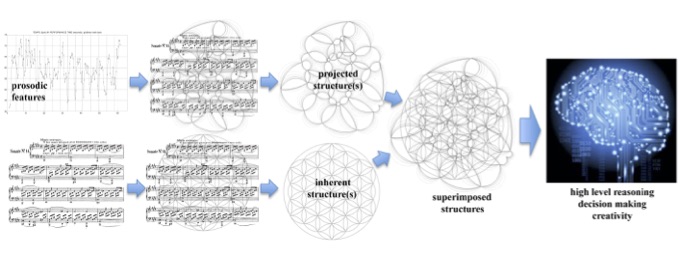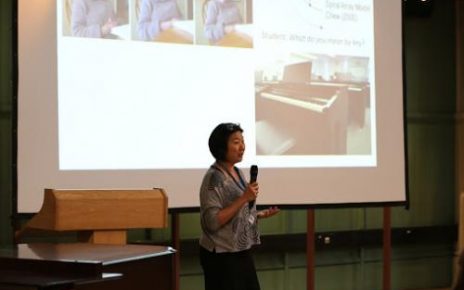
Above: The process of recovering a hearing from a performance and uncovering the reasoning behind the hearing
Chew, E. (2017). From Sound to Structure: Synchronising Prosodic and Structural Information to Reveal the Thinking Behind Performance Decisions. In C. MacKie (ed.): New Thoughts on Piano Performance: Research at the Interface between Science and the Art of Piano Performance. Kindle Amazon. ISBN 978-164007055-4.
Abstract: How a performer hears a piece is the determining factor in how s/he shapes a performance of the piece. This chapter focuses on abstracting this hearing from a performance of the piece, so as to uncover the thinking behind expressive decisions. A method is proposed for abstracting the hearing from a recorded performance, and for seeing the hearing using scientific visualisation. The method relies on superimposing layers of prosodic and structural information, and cross referencing between them to discover the reasoning behind the performance. Concrete examples in the form of three recorded performances of an excerpt from Beethoven’s Moonlight Sonata—by Artur Schnabel, Maurizio Pollini, and Angela Hewitt—provide practical illustration of the theory. The examples focus on hierarchical grouping structures and moments of emphasis as indicated by tempo shapes. Examining how the structures projected in performance relate to inherent score structures exposes the intent of the different hearings and reveals the means by which the performers foster these hearings.
Read more at [ paper preprint | about the book ]
Video example 1: Visualization of performed structures in Glenn Gould’s 1955 recording of the Goldberg Variation 8 a 2 Clav.
Video example 2: More complex structures in Glenn Gould’s 1981 recording of the Goldberg Variation 8 a 2 Clav.
The Glenn Gould examples were first described in a planning meeting at Johns Hopkins University’s Centre for Language and Speech Processing in November 2005.




